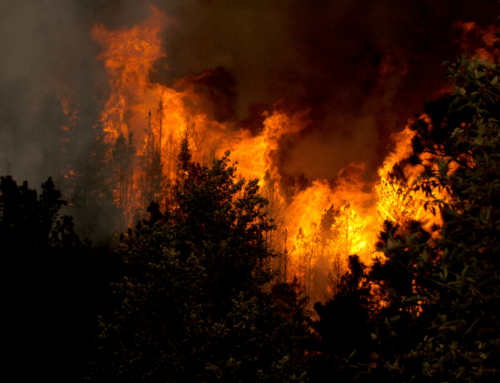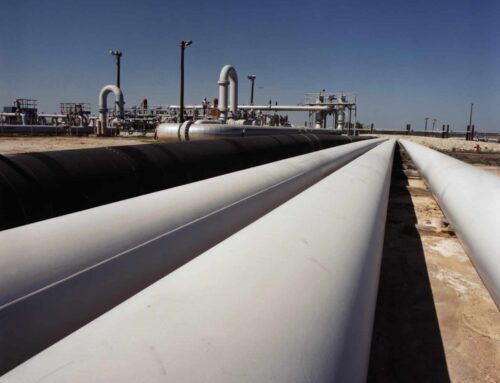On March 10, Senators Jacky Rosen (D-NV) and Chuck Grassley (R-IA) introduced a bipartisan proposal to update the terms for leasing federal land for oil and natural gas development. The bill is a straightforward fix for outdated features of the onshore federal oil and gas program, like a royalty rate that was last set in 1920 and lags what states charge. The bill won’t fix every problem, but it would eventually bring in billions of dollars in additional revenue for federal and state taxpayers and get us closer to getting a fair return for publicly owned oil and gas.
Download the whole fact sheet here, or skip down to descriptions of its sections:
- Royalties
- Minimum Bid
- Rent
- Expressions of Interest
- Fee Adjustment
- Reinstated Leases
- Fiscal Reform Study
Royalties
First and foremost, the bill would increase the royalty rate for new leases to explore for and develop oil and gas on federal land to 18.75 percent. The current rate of 12.5 percent was set in the Mineral Leasing Act of 1920. The 18.75 percent rate creates parity with what the government charges operators for offshore leases in federal waters. It is also in line with what most states charge for oil and gas production on state lands (see table).
The bill won’t change the royalty rate for oil and gas leases on federal land already in effect. But the sooner the new rate is implemented, the sooner taxpayers start getting more from every barrel of federal oil produced.
If the Bureau of Land Management (BLM), which oversees onshore federal production, had increased the royalty rate to 18.75% decades ago, taxpayers could have gotten up to $12.2 billion more in royalty revenue over the last decade (2011-2020). For more, read our 2020 report, Royally Losing.Minimum Bid
Next, the bill adjusts the “national minimum acceptable bid,” which is the lowest a company or speculator can bid in an auction for federal oil and gas leases. The current minimum bid of $2/acre was set in 1987. In recent years, many bidders have taken advantage of the low rate.
In 2019 and 2020 alone, more than 550 leases covering roughly 660,000 acres of federal land received the minimum bid. If the minimum had been $10/acre instead, as the bill proposes, taxpayers could have gotten $5 million in additional revenue.Rent
Another provision in the bill would increase the annual rent charged in leases on federal land, which was also last set in 1987. Since then, inflation has effectively reduced the value of rent paid to taxpayers by more than half. The bill would correct for the effect of inflation almost perfectly by increasing rent for the first five years of a lease from $1.50/acre to $3/acre and rent for the last five years of a lease from $2/acre to $5/acre. Using BLM statistics for the number of acres leased but not producing, Taxpayers for Common Sense estimates that the failure of rental rates to keep up with inflation has reduced rental revenue by roughly $30 million per year over the last decade. Because first-year’s rent is due when a parcel receives a bid to be leased at auction, increasing the rate now will bring in additional revenue with each new lease sale.
Expressions of Interest
Currently, when the BLM begins preparing an oil and gas lease sale, it accepts nominations for which areas of federal land should be put up for lease at auction. These nominations, or “Expressions of Interest,” can be submitted anonymously by oil and gas companies or others without paying any fee. But it costs time and money for the BLM to evaluate whether nominated lands should be included in the sale and whether there are any environmental, historical, or other considerations that might preclude development on them.
The bill addresses the gap between the ease of nominating parcels and the investment it takes for BLM to follow up on nominations by introducing a fee for Expressions of Interest. Under the provision, the Secretary of the Interior will set the fee at a level that will cover BLM’s cost of processing nominations, but it can’t be less than $15/acre. The fee would be a common-sense extension of the user-pays principle, under which companies currently pay for other parts of the process like applications for permits to drill that are costly for BLM to process. In the last three years on record (2017-2019), oil and gas companies and others filed Expressions of Interest for 17.3 million acres in the Lower 48.
If the bill had been in place, BLM costs could have been offset by up to $260 million in fees, reducing the funding needed from taxpayers.Fee Adjustment
Taxpayers have lost hundreds of millions of dollars, if not more than a billion dollars because the terms for oil and gas leases set by Congress in 1987 failed to keep up with inflation. The bill prevents similar losses in the future by requiring the Secretary of the Interior to update the fees set in the bill for rent, minimum bids, and Expressions of Interest among others at least every four years.
The bill also authorizes the Secretary of the Interior to update fees if deemed necessary to enhance financial returns for taxpayers.Reinstated Leases
If a lease-owner fails to live up to lease terms, including paying rent, a lease can be terminated. However, if the owner quickly pays what’s owed and explains their prior failure, they can apply to the Secretary of the Interior to have the lease reinstated. Reinstated leases include higher rates for lease terms. Along with increasing the standard rates for all leases, the bill also increases the rates for reinstated leases: back rent is increased from $10/acre to $20/acre, future royalties increased from 16.67% to 25%. In the same section, rent for noncompetitive leases issued for abandoned lands with production is increased from $5/acre to $10 acre, and the royalty rate for such leases is increased from 12.5% to 25%.
Fiscal Reform Study
Lastly, the bill would require the federal government to contract the National Academy of Sciences to study the implementation of fiscal reforms and produce a report on the matter.













Get Social